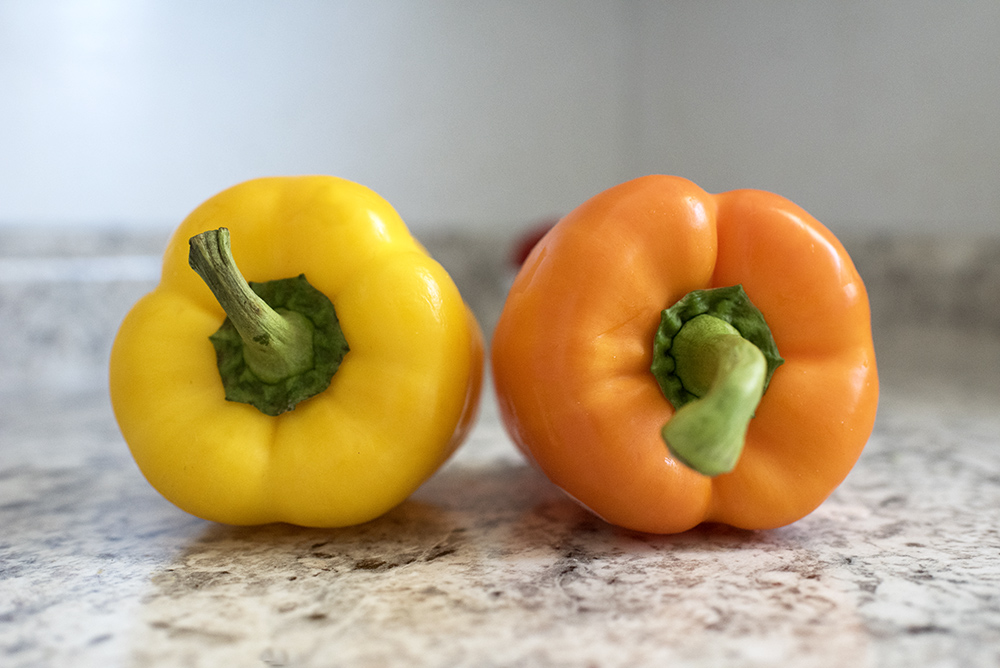
10 Fruits and Vegetables I Always Have On Hand + The Nutrition Behind Them
Today I have created a list of 10 fruits and vegetables I always have on hand. I think it’s fun to see what others buy for their staples and honestly, I like seeing what others buy for groceries in general. Is that strange? haha! You’ll have to let me know in the comments below if you share the same strange love of seeing other people’s groceries. Anyway! As I go through the list, I will give you some ways I use each of them and the nutrition behind each one. Let’s get to it!
Oh! and disclaimer, I’m not a nutritionist, these are just a few things I learned while taking nutrition classes in college. If you have any health concerns or further questions about nutrition, you should definitely seek a registered dietitian or doctor.
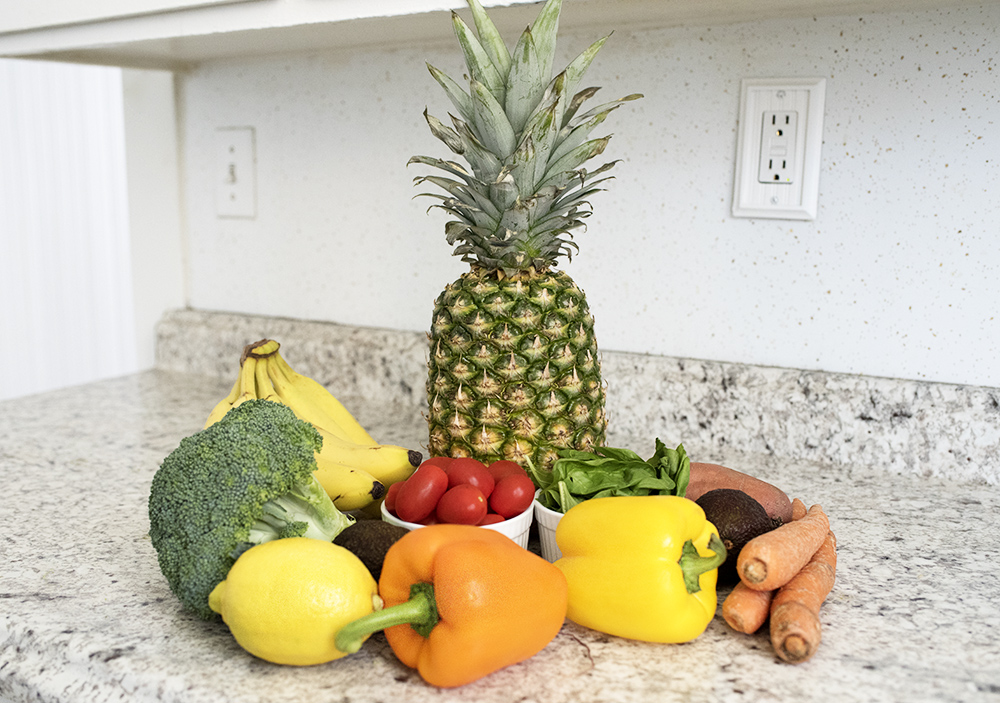
1.Spinach
I buy the big container of spinach from Costco for like $4.00? It’s definitely a good price for how much you get! If I see it somewhere else on clearance I will usually grab it and freeze it… yes, you can freeze spinach! Once you freeze it, you can use it in smoothies, soups, and stews but I use unfrozen spinach in pasta, for salad, in egg scrambles, omelets, in wraps and on homemade pizza.
Nutrition of Spinach
Spinach is a great source of minerals making it well known for bone health. Spinach contains special phytonutrients (chemicals produced by plants that are beneficial for humans to eat) that have been shown to help decrease inflammation in the body as well to have anti-cancer benefits. As with most fruits and vegetables, spinach contains a great amount of fiber. Fiber helps keep our digestive system moving, gives us a steady flow of energy and helps keep us fuller, longer.
Sounds like spinach is pretty incredible, huh? Go grab yourself some spinach and throw it in EVERYTHING!
2.Bell Peppers
I buy my bell peppers from Costco as well! They come in a package of six and I ALWAYS use them up! I use peppers for fajitas, in omelets, for stuffed peppers, on kabobs, in salads, in stir-frys, in pasta, in chili, on pizza, and in soup. I also like to eat them raw with hummus.

Nutrition of Bell Peppers
Red bell peppers are a great source of vitamin C. They contain almost double the amount of citrus fruits, shocking huh?
Red bell peppers also contain large amounts of carotenoids, vitamin E, and vitamin C which together provide anti-inflammatory and antioxidant benefits. As with most fruits and vegetables, red bell peppers contain great amounts of fiber.
If you’re looking to incorporate more vitamin C into your diet, grab some bell peppers and start cooking!
3.Cherry tomatoes
I like to buy both cherry tomatoes and regular but I tend to use cherry tomatoes more often. I use them in pasta, omelets, on kabobs, in salads, in rice bowls, roasted with asparagus, in wraps, and on tacos.
Nutrition of Cherry Tomatoes
Certain antioxidants in tomatoes protect the bones, liver, kidneys, bloodstream, and may also work to reduce the damage to fat in cell membranes or within the bloodstream. Tomatoes are great to eat for overall cardiovascular support and they are known to decrease the risk of heart disease. Tomatoes can also help lower cholesterol, support bone health, and the minerals, vitamins, and antioxidants are great for your overall health.
4. Broccoli
Broccoli is so versatile and so easy to cook with! I steam it and use it as a side dish most often to go with salmon, steak or chicken. I also enjoy putting it in soup, stir-frys, on pizza, in pasta salads, in salads and roasted with other veggies.
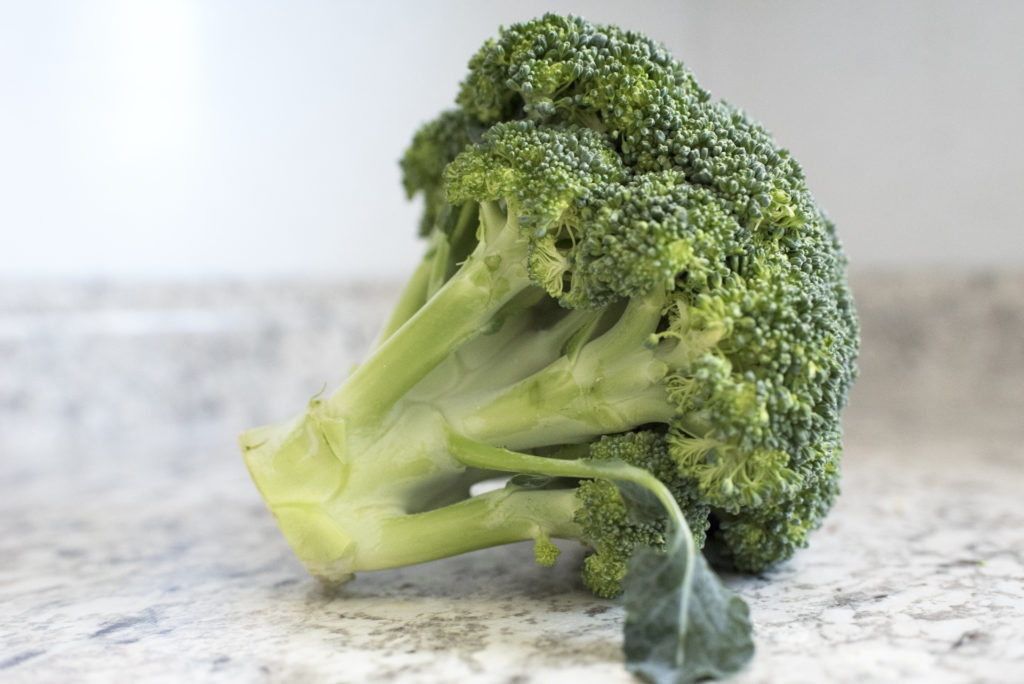
Nutrition of Broccoli
Broccoli is great for overall anti-inflammatory benefits in our bodies as well as providing an extra boost in detoxification support, protection against oxidative stress, cardiovascular support, digestive support, and protection from certain cancers. Broccoli has powerful overall health benefits from their antioxidants, minerals, vitamins, and fiber. So eat up buttercup!
5.Carrots
I like to keep carrots on hand to eat with hummus. They are also great in salads, soups, stews, roasted, grilled, in curries, in stir fry, in juice, in smoothies, and in coleslaw.
Oh! and just a side note on carrots, I usually buy the bigger ones and cut and peel them myself. I find that the bigger ones tend to cost less and they last longer too.
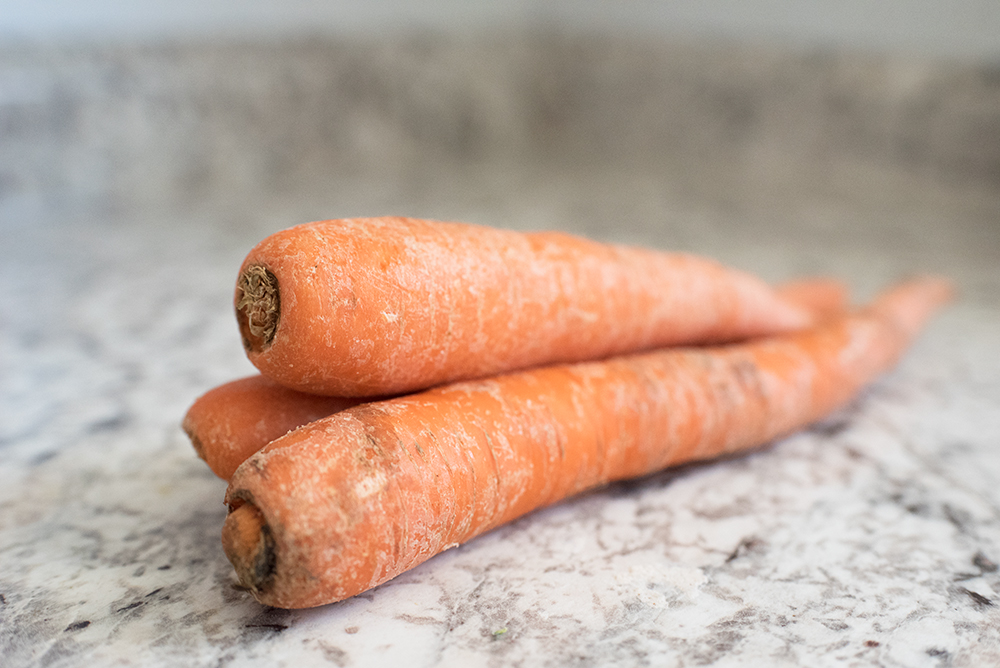
Nutrition of Carrots
Carrots contain vitamin A and carotenoids which help protect our vision and overall eye health.
Fun fact: If you are looking to increase the carotenoids in the carrots, cooking and heating them will do the trick!
6. Sweet Potatoes
Kendall and I always have a debate on whether or not sweet potatoes are the best vegetable because I love them and can eat them daily and he doesn’t like them… Which is kind of hard for me to wrap my brain around. ha! They are so good! I actually crave them a lot so I have to keep them stocked in my pantry. My favorite way to cook a sweet potato is in the oven. Sometimes I will cut them up in rounds and other time I will throw the whole sweet potato in and top it with cinnamon, once it’s done. I like putting sweet potatoes in soup, in chili, in pancakes, in smoothies, in muffins and pies. I also like making sweet potato fries with them!
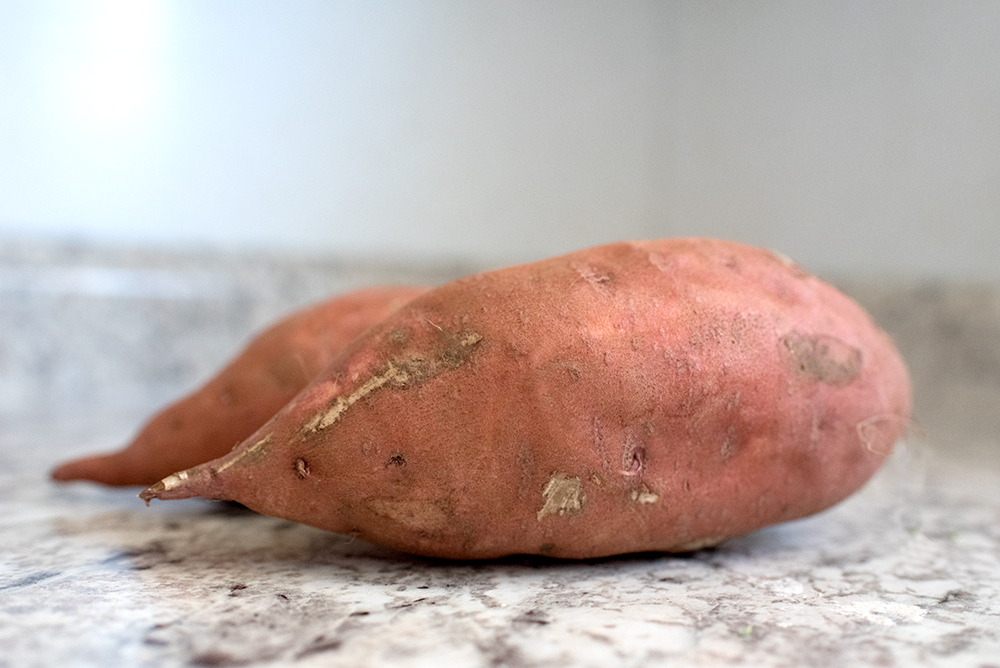
Nutrition of Sweet Potatoes
Sweet potatoes contain antioxidants, anti-inflammatory nutrients, and have a ton of fiber. I like to eat them pre and post-workout because they are easy to digest, they are carbohydrate-rich and fiber-rich. They are also great for keeping your blood sugar stable! As with carrots, sweet potatoes are a rich source of vitamin A.
Fun Fact: Since vitamin A is fat-soluble (fat-soluble vitamins are A, D, E, and K) it is best to eat sweet potatoes along with a little fat so that the nutrients can be absorbed better.
7. Avocado
Oh, Avocado! I have a love, love relationship with them. Kendall even named my gamertag on Xbox, avocado slice, because I love them so much! haha. I try to eat avocado at least every other day because they contain so many healthy fats! I like to use avocados on sandwiches, on top of chili, on top of soup, in wraps, on fajitas, on tacos, in salads, in smoothies and on toast. I also enjoy making guacamole with them.
Tip: Since I can’t have dairy, I have found avocado’s to be a great alternative to sour cream.
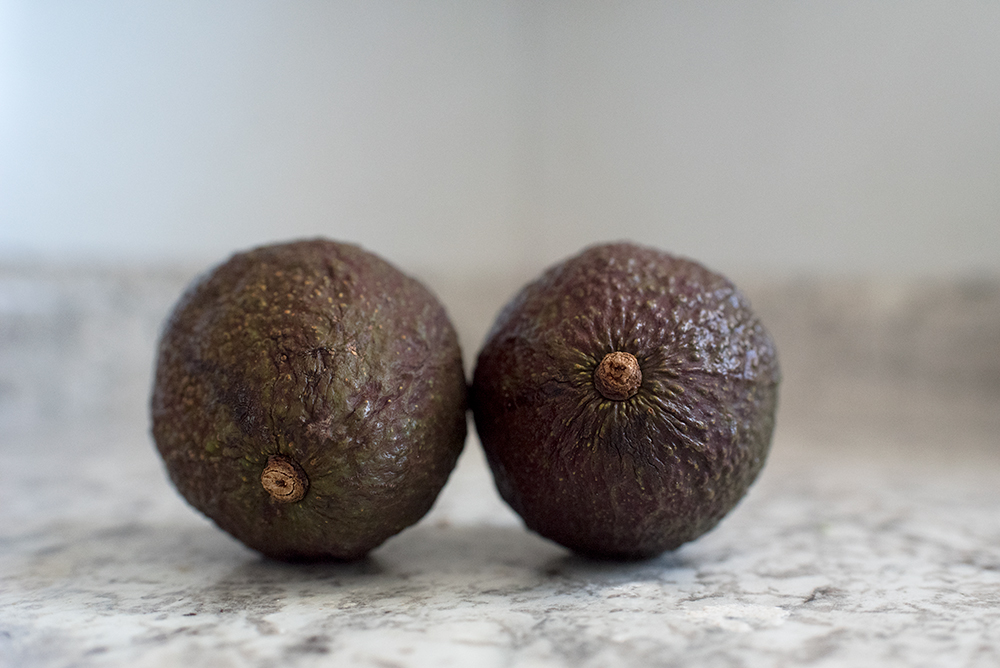
Nutrition of Avocados
Like I said above, avocados contain high amounts of fat. The good fats though (monounsaturated fats) so don’t be afraid to eat them! They are a great food to eat for heart health and are loaded with fiber so they will keep you fuller, longer.
8.Pineapple
One of my friends Melissa, always jokes that I always have a pineapple in my kitchen every time she comes over… and it’s true, I do! haha. I always have a back-up in case I run out of my frozen pineapple. I mainly use pineapple in smoothies but I will occasionally eat them fresh with some strawberries. They are also great to cook with shredded chicken and they taste great grilled! If you’ve never tried grilled pineapple before, you must! It’s so yummy.
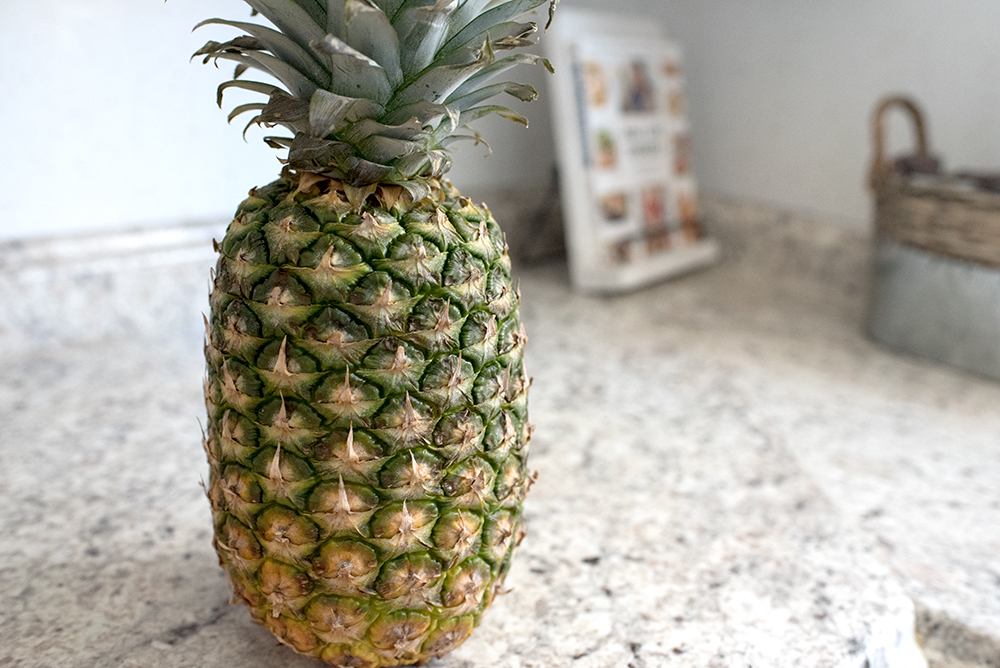
Nutrition of Pineapple
Pineapple is another fruit that contains high amounts of vitamin C! I like to drink orange, pineapple smoothies when I feel a cold coming on because it gives me an extra boost! Pineapples are also high in fiber and they contain natural enzymes which help break down proteins. Manganese is also very prevalent in pineapple! Manganese helps the brain, nervous system and the bodies enzyme systems function properly.
9.Bananas
If I had to choose one from this list that I eat every single day, bananas would be it! They are so easy to grab and go, so I eat them a lot as a quick snack. I use bananas in smoothies, on top of toast with peanut butter, in popsicles, in banana bread, in yogurt, on top of pancakes and in oatmeal. I also like to use frozen bananas to make dairy-free ice cream.
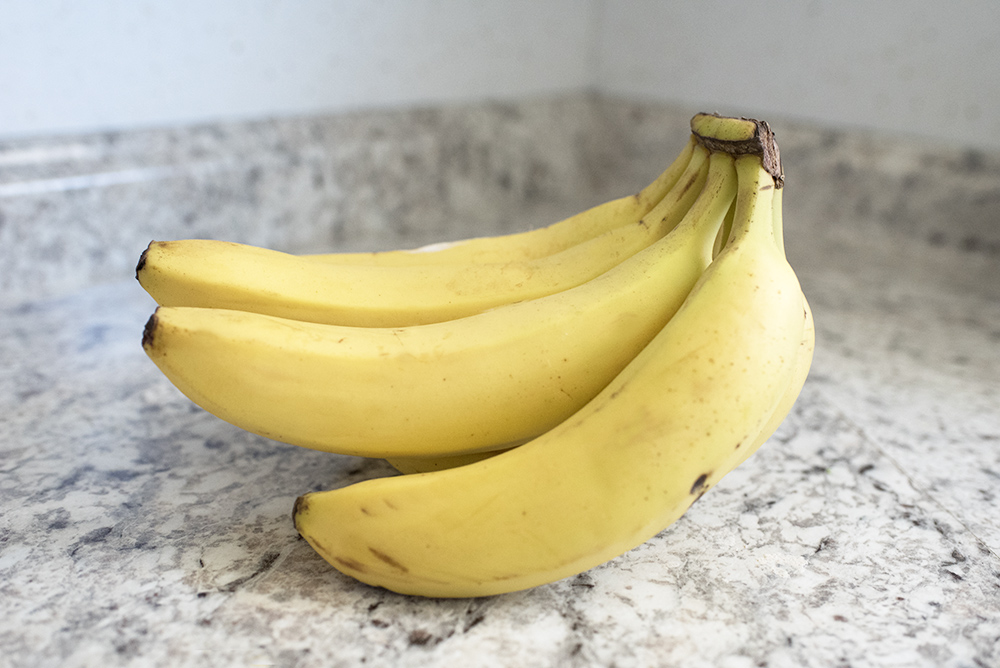
Nutrition of Bananas
Bananas contain a lot of potassium and fiber, therefore, they are a great aid for helping improve digestion. While I was taking nutrition classes, I discovered that bananas are high in calories which makes them a great pre and post-workout food.
Tip: If you have bananas that are going to go bad, cut them up into slices, place on a pan lined with parchment paper and place them in the freezer. Once they are frozen, place them in a zip lock bag and use in future smoothies!
10.Lemons
I use lemons quite often! I use them in water, in tea, in smoothies, in soups, on top of salmon and to make salad dressings.
Tip: To make a salad dressing with lemons, all you have to do is squeeze half a lemon and add an equal amount of olive oil, mix together and finish with some salt, pepper, and garlic to taste. You can also add any other seasonings of choice.
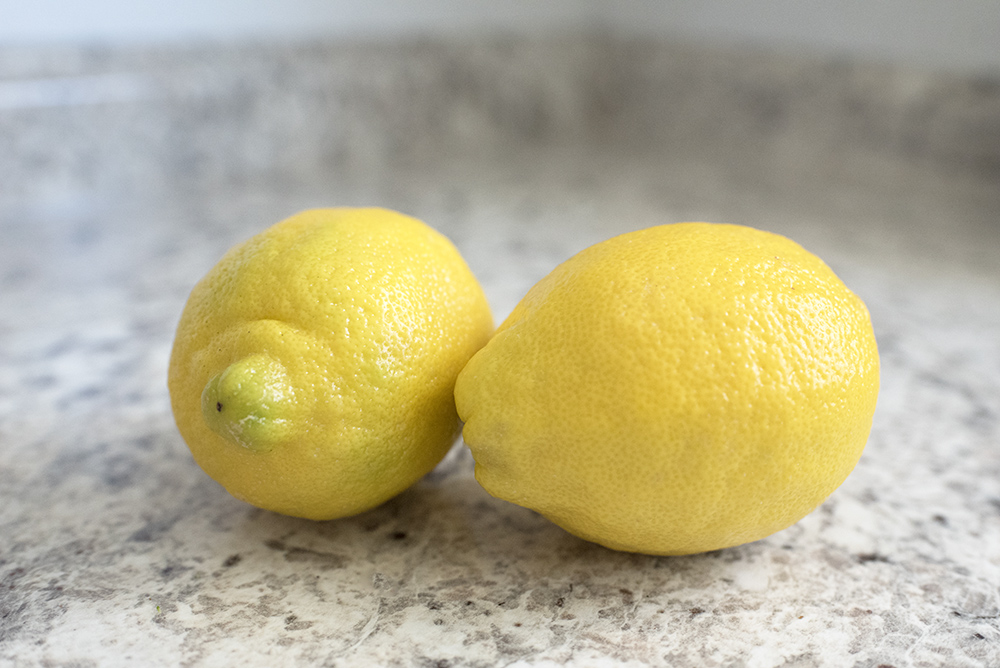
Nutrition of Lemons
Lemons are a great source of vitamin C! During the winter months I like to add lemon in my water every morning for an extra immunity boost.
Tip: If you start to feel a cold coming on, grab a mug, fill it with warm water, place a few lemon slices in it, 1 TB spoon of honey and a few drops of Thieves essential oil. It helps so much, I promise!
Okay, that is it for today. I hope this helped give you a few ideas on how to use these ten fruits and vegetables! 😉 Also, I want to know what fruits and vegetables you like to have on hand. Leave your favorites in the comments below! Thanks for stopping by!


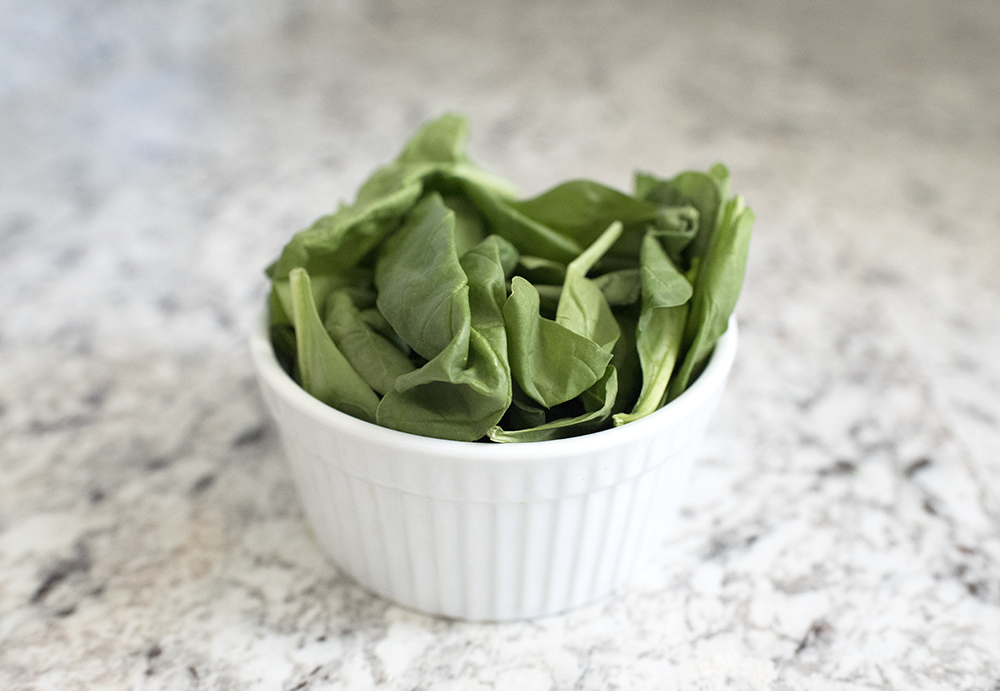
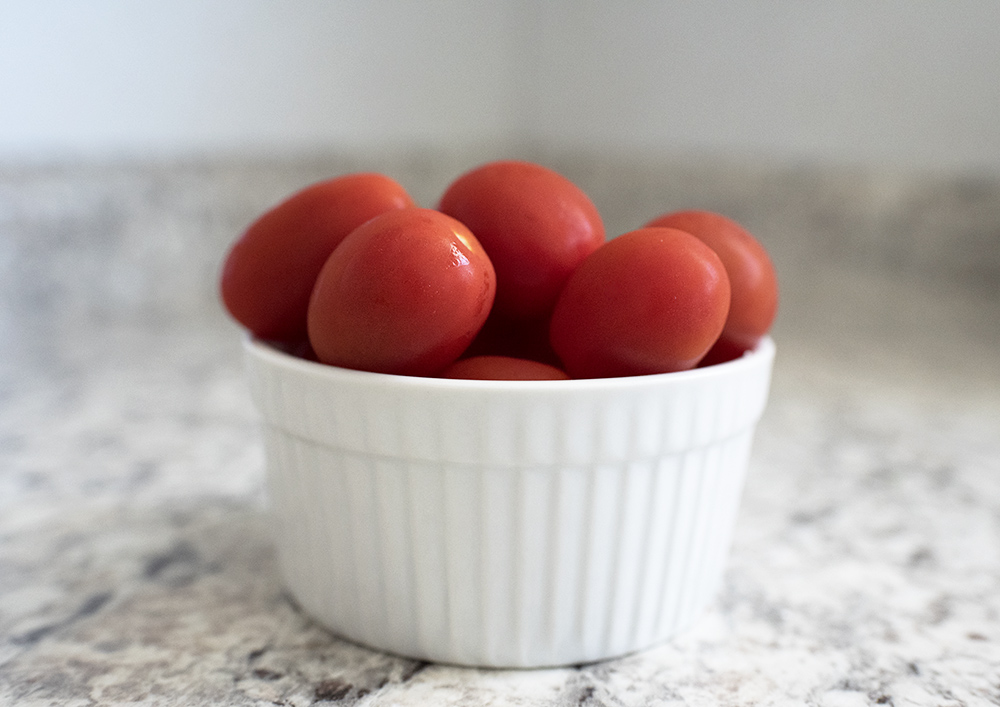
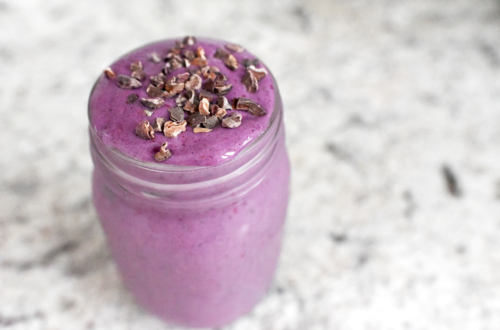
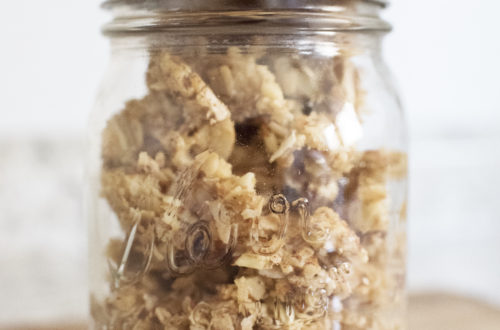
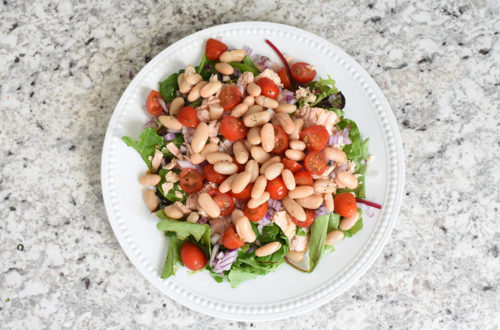
2 Comments
Debbie Hegman
BEAUTIFUL vegi pics! I think I will go eat a banana.
Jessa
Thank you! It was fun to experiment and take pictures of food for this post!